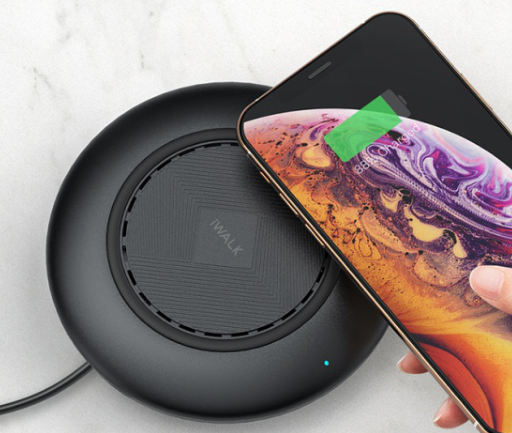What are the charging modes of wireless charging technology?
What is wireless charging? What are the modes of wireless charging? What are the current standards for wireless charging? iWALK will popularize the related wireless charging knowledge below, so that everyone can better understand the wireless charging technology.
The current mainstream wireless charging system consists of a transmitter coil and a receiver coil, and the two coils together form an induction coil. The alternating current carried by the transmitter coil generates a magnetic field and induces the receiver coil to generate a voltage through induction. This voltage can be used to power mobile devices or charge batteries. Most wireless chargers currently on the market are based on related principles. The advantage is that the technology of the product is mature and the price will be relatively low; the disadvantage is that the charging speed is not fast in charging efficiency. Specifically, there are the following three types:
Electromagnetic induction magnetic field resonance radio wave type is first of all electromagnetic induction type. Most of the wireless charging on the market uses electromagnetic induction type. The working principle is to place the coil of the transmitter and the coil of the receiver in two separate devices. When input to the transmitter coil, a magnetic field is generated, and the magnetic field induces a current to the coil at the receiver, which creates a wireless power transmission system. At present, the most common charging solution uses electromagnetic induction. This solution requires that both mobile phones and wireless chargers require wireless coils.
The second is magnetic resonance. Electromagnetic resonance also uses two coils with completely matching specifications. One coil generates a magnetic field when energized, and the other coil resonates and the current generated charges the device. The advantage of magnetic resonance wireless charging is that there is a certain tolerance in distance. In this way, wireless charging can have a longer distance, and the use scenario is greatly improved.

The last is the radio wave type, which uses radio waves to charge mobile devices, and the future spatial distance will be significantly improved. However, compared with electromagnetic induction wireless technology, radio wave type is not currently popular. Working principle, the radio wave transmitter will convert electrical energy into a radio wave, and use the receiving device connected to the mobile phone to obtain this radio wave, and then convert it into electrical energy.
Knowing the main working principle of wireless charging, what are the wireless charging standards on the market? Qi standard Wi-Po technology wireless charging standard: There are five mainstream wireless charging standards: Qi standard, Power Matters Alliance (PMA) standard, Alliance for Wireless Power (A4WP) standard, iNPOFi technology, Wi-Po technology.
The QI wireless charging standard is relatively mainstream, and mobile phone manufacturers including Apple have joined the agreement. Qi standard: Qi is the world's first standardization organization that promotes wireless charging technology-the Wireless Power Consortium (WirelessPowerConsortium) launched the "wireless charging" standard, which has two characteristics of convenience and versatility. The biggest advantage is that as long as there is QI on the product's logo, it means that the product supports wireless charging, and its versatility has been greatly improved.
As long as there are Qi logos on the products of different brands on the market, it means that they can be charged with Qi wireless chargers, which solves the technical bottleneck of "universality" of wireless charging. In the near future, mobile phones, cameras, computers and other products can be charged with Qi wireless chargers, providing the possibility of large-scale application of wireless charging. Qi uses the most mainstream electromagnetic induction technology, and the cost will be lower.
Wi-Po technology: For Wi-Po magnetic resonance wireless charging technology, a high-frequency constant amplitude alternating magnetic field generating device is used to generate a resonant magnetic field of 6.78 MHz to achieve a longer transmission distance. The technology achieves communication control through Bluetooth 4.0, which is safe and reliable, and can support one-to-many synchronous communication. It also has over-temperature, over-voltage, over-current protection, and foreign object detection functions. Wi-Po magnetic resonance wireless charging can be applied to various scenarios such as mobile phones, computers, smart wearables, smart homes, medical equipment, and electric vehicles.
If you want to know more, our website has product specifications for wireless charging technology, you can go to ALLICDATA ELECTRONICS LIMITED to get more information

